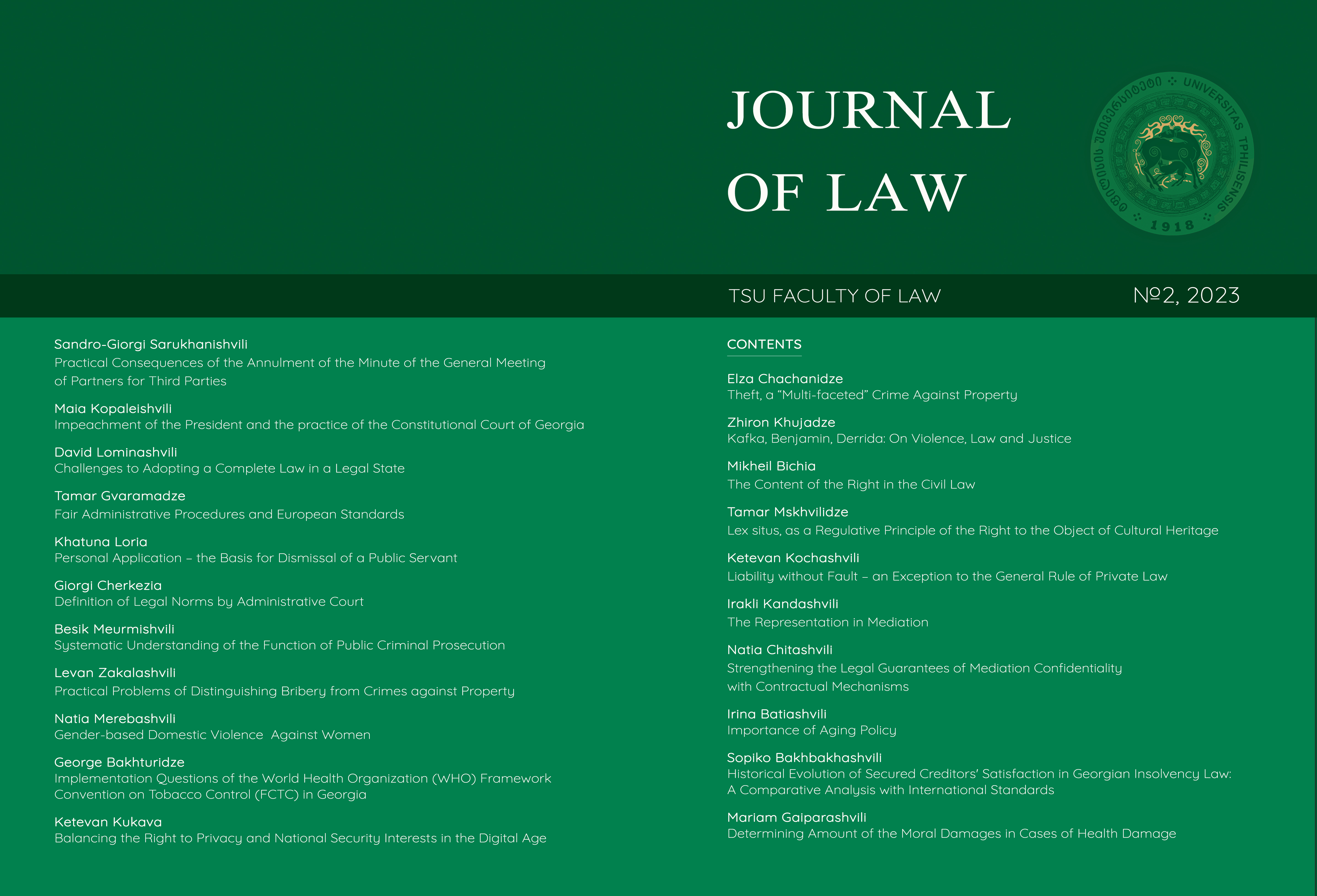Lex situs, as a Regulative Principle of the Right to the Object of Cultural Heritage
DOI:
https://doi.org/10.60131/jlaw.2.2023.7694Keywords:
Choice of Law, Jurisdiction, Illegal trade in cultural objects, The Bona Fide Purchaser, The Legality of an object.Abstract
Unethical, immoral trafficking of cultural property is illegal in most states. The commercial imperative is not responsive to the cultural flow, the importance of intergenerational transmission of culture, or the need to take control over the free movement of cultural property. The demand for antiquities greatly exceeds the diminishing legitimate supply. Suppliers (robbers, dealers, brokers) evade the law when making transnational transactions. Private international law can play a vital role in regulating the cross-border transfer of cultural goods.
References
Baudrillard J., The Conspiracy of Art, tr A Hodges, The MIT Press, 2005, 65.
Belder L., The Legal Protection of Cultural Heritage in International Law and its Implementation in Dutch Law, 2013, 22, 24, 66.
Feilden B.M., Jokilehto J., Management Guidelines for World Cultural Heritage Sites, ICCROM, 2nd Edition, 1998, Rome.
Fincham D., Rejecting Renvoi for Movable Cultural Property: The Islamic Republic of Iran v. Denyse Berend International Journal of Cultural Property, 2007, 111-116, 112, 114.
Fincham D., How Adopting the Lex Originis Rule Can Impede the Flow of Illicit Cultural Property, Columbia Journal of Law and the Arts, 2009, 115, 118, 120.
Gazzini I.F., Cultural Property Disputes: The Role of Arbitration in Resolving Non-Contractual Disputes, Transnational Publishers Inc, 2004, xxiii.
Gilkey L.B., Can Art Fill the Vacuum in D Apostolos-Cappadona (ed), Art, Creativity and the Sacred, 1996, 187-189.
Roodt C., The Role of Private International Law in the Protection of Art and Cultural Objects, 2015, 3, 6, 16-17, 13, 35, 115.
Roodt C., Miller D.C., Stolen Cultural Property: Implications of Vitium Reale in Private Law and Private International Law, 2013, 1, 3-6.
Routledge C. F., International Law and the Protection of Cultural Heritage, 2010, 151.
Sadigh S., Cultural Heritage Network, Court of London Ignores Iran’s Ownership of Achaemenid Bas-relief, 2007, 132.
Symeonides S. C., The American Choice-of-Law Revolution: Past, Present and Future, Martinus Nijhoff Publishers 2006, 15-24.
Staker C., Public International Law and the Lex Situs Rule in Property Conflicts and Foreign Expropriations, 58 Brit. Y.B. Int’s L., 1988, 151, 164.
Tolstoy L., What Is Art? The Brotherhood Publishing Company, 1898, 210.
Kreder J.A., The New Battleground of Museum Ethics and Holocaust-Era Claims: Technicalities Trumping Justice or Responsible Stewardship for the Public Trust? Oregon Law Review, Vol. 88, 2009, 65-72.
Press Office of the Federal Government Commissioner for Culture and the Media / Press and Information Office of the Federal Government, 11044 Berlin, Key aspects of the new Act on the Protection of Cultural Property in Germany, 2016.
Downloads
Published
How to Cite
Issue
Section
License

This work is licensed under a Creative Commons Attribution-ShareAlike 4.0 International License.









